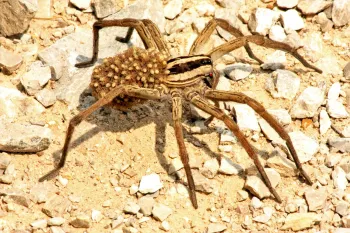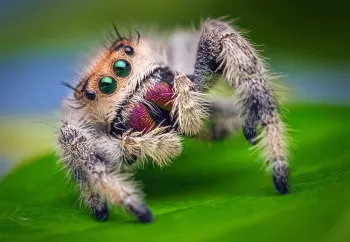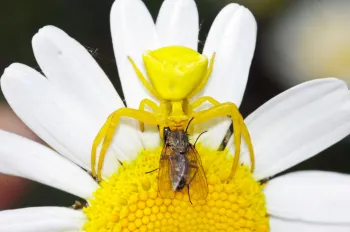
Spiders get a bad rap. Many people go to great lengths to avoid or get rid of them. Is it their other-worldly appearance? A concern about being bitten by a poisonous type or simply the idea of “creepy, crawling” things? Whatever the reason, before eliminating them, it’s good to know who these critters are and understand the invaluable role they play keeping pest populations in check.
Found around the globe with at least 50,000 known species, spiders inhabit everywhere but the oceans and Antarctica. These eight-legged predators are carnivorous, injecting venom through their fangs to paralyze or kill their prey. While insects are the bulk of their diet, they’ll go for other small invertebrates, including other spiders, and even frogs, fish, birds, and rodents.

Spiders you may find indoors include cobweb spiders, funnel weavers, and yellow sac spiders, while in the garden, you’re most likely to see crab spiders, jumping spiders, orb weavers, and wolf spiders.
Cobweb spiders are frequent inhabitants of dark corners in basements, abandoned buildings and piles of wood, hanging upside down in irregular, sticky webs. They feed on insects that walk or fly into their webs. Their brown bodies are globular like widow spiders but they’re harmless to humans. Funnel weavers are the most common spiders found in homes, particularly during late summer and early fall. These sit-and-wait predators produce dense mats of silk on shrubs, thick grass, or corners of buildings. The small yellow sac spider spins a silken sac web in the corners of ceilings and walls, and behind shelves and pictures, and is also commonly found outdoors in shrubbery.

Colorful crab or flower spiders have enlarged front legs that give them a crablike appearance. They hunt during the day and often appear on blossoms where they blend with their background and pounce on unsuspecting prey. Hairy looking jumping spiders are day-active hunters in plants or on the ground. They don’t build webs but stalk and swoop down on their target. With their excellent vision, they have the ability to jump impressive distances for their size.
It’s hard to miss an orb weaver; the enormous mature females are adorned with exotic looking black-and-yellow markings. They spin new elaborate webs every day, recycling their silk supply by eating the old one. Due to poor vision,they rely on web vibrations to let them know that prey has become entangled in their web. With long hairy legs, big, dark wolf spiders hunt by running down prey on the ground. Actively hunting in the open during the day and night, they’re often observed on the ground in litter and on low vegetation.

The spider of greatest concern in our area is the black widow. Easily recognized, the mature female is shiny jet black with a distinctive red hourglass marking on her underside. These spiders seek out holes, crevices, trash, and clutter and are often found around homes, outbuildings, and rock walls.
Of the many known species of spiders, only four species worldwide, are dangerous to humans, and of the four, widow spiders are the only ones found in the U.S. Bites from black widow spiders are quite rare, even where these spiders are very common. If bitten, seek medical attention immediately or call the California Poison Control Hotline at 1-800-222-1222. Effective anti-venom for black widow bites is available and bite victims can go from intense pain back to normal in 30 minutes.
Contrary to popular belief, there are no populations of the brown recluse spider in California. The few brown recluses that have been collected in the state are typically found in facilities that receive goods from out of state or are unintentionally transported by people who have moved from the Midwest.
If you happen upon spiders in the garden (other than the black widow), just ignore them and let them do their thing - helping to keep your garden pests in check.
By Nanette Londeree, September 20, 2025

